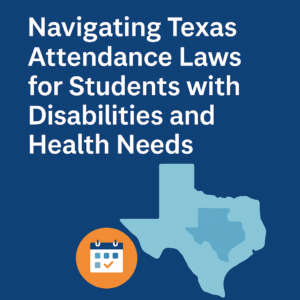
Unpacking the Layers of Absenteeism
Absenteeism in schools manifests in various forms, each with distinct causes and implications. Recognizing these differences is the first step in crafting effective solutions. The most common types of absenteeism include:
- School Withdrawal: This occurs when parents or caregivers, for reasons such as needing the child to care for a sick relative or sibling or due to economic pressures requiring the child to work, keep their student at home. This type highlights the socioeconomic challenges entwined with educational access.
- School Exclusion: In some instances, schools inadvertently contribute to absenteeism through policies that suspend or exclude students as a consequence for missing school, further alienating them from the educational support they require.
- Truancy: Truancy involves students skipping school to engage in activities they perceive as more rewarding. This deliberate avoidance of school necessitates addressing deeper issues related to student engagement and motivation.
- Life Circumstances: Various external factors, including transportation issues, lack of appropriate clothing, and unstable housing, can hinder a student’s ability to attend school, underscoring the need for community-based support systems.
- School Avoidance: Emotional distress or fear, possibly due to bullying, academic pressures, or social challenges, can lead students to avoid school altogether, pointing to the importance of a supportive and understanding school environment.
Strategies for Mitigating Absenteeism and Fostering Engagement
In the quest to mitigate absenteeism and particularly truancy in schools, adopting a nuanced, comprehensive approach is paramount. Central to this effort is the strategy of early identification and intervention, which is instrumental in preventing sporadic absenteeism from evolving into a chronic issue. Schools are encouraged to set up systems capable of promptly recognizing signs of absenteeism. This involves not only tracking attendance patterns but also identifying subtle indicators such as changes in academic performance, social withdrawal, or shifts in behavior that may signal underlying issues contributing to absenteeism.
Once potential cases of truancy or absenteeism are identified, schools should mobilize support teams dedicated to providing targeted assistance. These teams can work closely with students and their families to understand the specific challenges they face, ranging from socio-economic constraints to personal or emotional difficulties. The goal is to create a tailored support plan that addresses these challenges, leveraging resources within and beyond the school community. This could include academic support, counseling services, family outreach programs, or connecting with community organizations that offer services like transportation aid, clothing, or housing support.
Further enriching this strategy is the imperative to foster an inclusive, engaging school culture that encourages regular attendance and active participation. Schools can achieve this by offering a variety of interest-based clubs, sports, arts, and other extracurricular activities that resonate with students’ diverse interests and talents. Peer mentoring programs and student councils can also empower students by giving them a voice in decision-making processes, thereby enhancing their connection and commitment to the school community.
Moreover, establishing strong partnerships with local organizations, social services, and families amplifies the support network available to students, addressing external factors that may impede their ability to attend school regularly. Such collaborative efforts not only tackle immediate barriers to education but also build a foundation for long-term success and well-being for students.
By integrating these strategies within a comprehensive framework for addressing absenteeism, schools can create a supportive ecosystem that not only identifies and intervenes early in cases of truancy but also actively works to remove barriers to education, fostering a sense of belonging and engagement among all students. This proactive, compassionate approach ensures that every student has the opportunity to thrive academically and personally, setting the stage for a brighter, more inclusive future in education.

Here are the key strategies and action points you can implement in your school today:
- Early Identification and Intervention: Implementing systems for early detection of absenteeism and truancy allows for timely intervention. Schools can develop support teams to provide targeted assistance to students, addressing the specific challenges they face.
- Creating an Inclusive School Culture: Cultivating a positive and engaging school environment is crucial. Schools can introduce initiatives that foster student engagement, such as interest-based clubs, peer mentoring, and participatory decision-making, enhancing students’ sense of belonging.
- Building Strong Community Partnerships: Collaboration with local organizations, social services, and families extends the support network for students. These partnerships can offer essential resources like transportation solutions, clothing banks, housing assistance, and access to healthcare, tackling the life circumstances contributing to absenteeism.
- Comprehensive Support Systems: Addressing absenteeism requires more than punitive measures. A comprehensive approach, focusing on understanding the reasons behind absenteeism and working collaboratively with students, families, and the community, is essential for developing sustainable solutions.
Future Focus: A Collective Endeavor
The challenge of truancy and absenteeism in schools demands attention and action from all stakeholders involved in education. By understanding the multifaceted nature of absenteeism and implementing targeted, compassionate strategies, schools can ensure that all students have the opportunity to engage meaningfully with their education. It’s a collaborative effort that not only aims to improve academic outcomes but also supports the holistic development of students, preparing them to navigate the complexities of life. As we tackle the issue of truancy head-on, let us recommit to fostering educational environments where every student is seen, supported, and inspired to reach their fullest potential.







